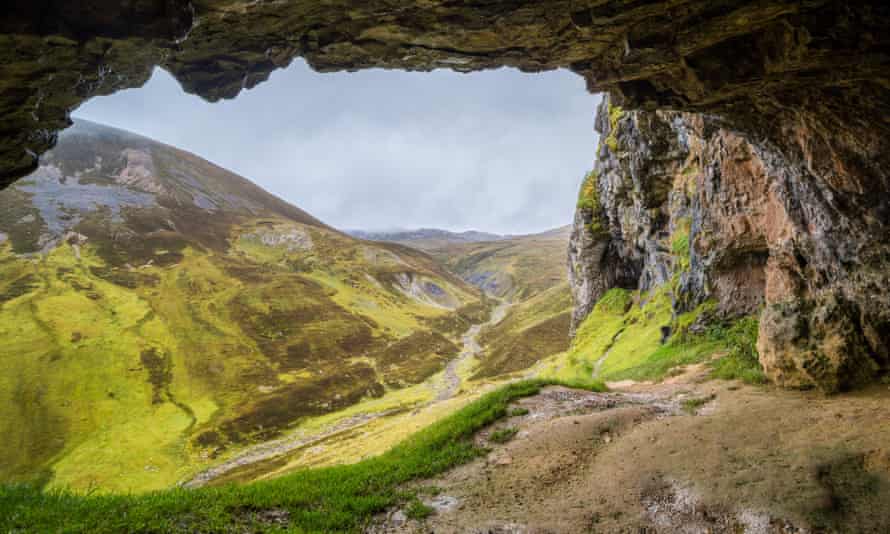Country diary: all around the Bone Caves, the stillness is spectacular
Assynt, Sutherland: Here lay the bones of bears, wolves and humans, the past looming heavy on the present

The signs at the start of the glen tell me that a mile and a half beyond lie caves that held the bones of reindeer and brown bears, horses, arctic foxes, lemmings, wolves and lynx. It’s a dreich day with a heavy sky as we walk up it to the Bone Caves. The path is fringed with bracken and heather and occasional scree, and populated by midges that are thriving in the stillness.
Last time I was here, an early July a couple of years ago, the bracken was enlivened by countless beautiful magpie moths, black and white with just a touch of orange. Today there’s only the clack of a stonechat and, once, a flurry of grey wagtails tussling on the rocks of the burn we were following. There are flowers too in this beautiful limestone glen – occasional sunbursts of yellow mountain saxifrage, and near the caves the remnants of beautiful mountain avens, the back of their leaves extraordinarily silver in hue. This place always feels like the domain of ravens, but the sky is birdless, and in the glen no animals can be seen.

The caves themselves are up a steep path, and I can’t help but wonder whether anyone would attempt to climb up and peer in if they were not pathed and signposted. They’re tucked into the bottom of a smooth cliff, easy to miss, and don’t look particularly impressive. And yet here we are. This glen, these caves, forged by glaciers and water over millennia, and populated by birds and animals that in some cases are no longer found in this country and are rare on this Earth. Where human remains have been found, they have been radiocarbon dated at over 4,500 years old. It’s remarkable to think about.
We walk beyond the caves and follow the circular route back down the glen just as the rain starts. We look down towards Loch Assynt and the mountains beyond. I’ve a line of a Norman MacCaig poem in my head – “As in the long ago, as in forever” – and as we look west we see a brightness to the sky that has not yet reached us, but will reach us soon.